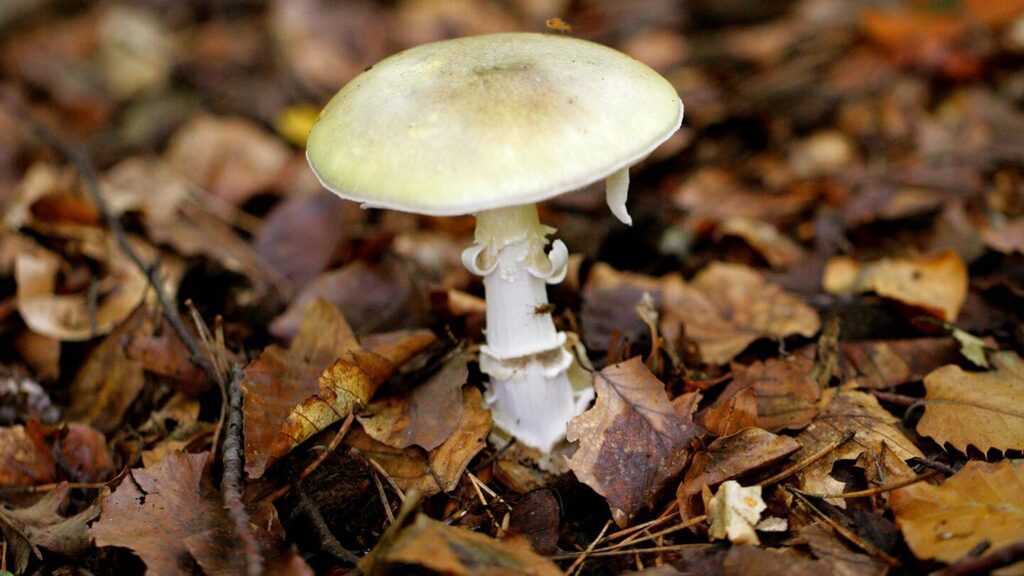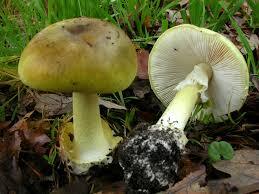News10NBC Investigates: ‘Death Cap’ mushrooms claim the lives of local puppies
ROCHESTER, N.Y. — There may be something growing in your yard right now that is deadly to your pet.
Two heartbroken local dog owners had no idea just how toxic this time of year can be for dogs, particularly puppies.
Maple, a golden retriever, was just eight weeks old when she came home to West Irondequoit with the Vankerhoves.
“She was a perfect combination of sweet and spicy and gentle and lovable,” recalls her mom, Kelly Vankerhoves. Maple quickly stole the hearts of the whole family.
The same was true when Casey Learch, who lives in Fairport, met her puppy, Star.
“The second I saw her, I knew she was meant to be mine. I got her that day,” Learch recalls.
For weeks, the two were inseparable.
“She was all the wonderful elements that you could want in a puppy. She was so well behaved,” she says. “She just wanted to be by me constantly. We were each other’s just everything.”
Both Maple and Star were inquisitive pups. Their moms didn’t think much of it until recently.
“I went to get her out of the crate one morning and as soon as I saw her, I knew she wasn’t right. She was lethargic. She was unwilling to eat. She vomited her water and we immediately sought medical care,” recalls Vankerhoves.
She had no idea what would have made Maple so sick.
“When we got her to the animal hospital, her liver enzymes were elevated, she was lethargic, unable to eat — all the different signs pointed to toxicity,” Vankerhoves says.
Within hours, Maple was gone.
Learch knew what the source of Star’s sickness was. She had seen her puppy vomit a mushroom while the two were outside.
“I got in the car and went to Buffalo. She did have a very violent seizure before I left the house and it put her in a comatose state,” recalls Learch, “by 10 o’clock that night, she rapidly declined and she was gone.”
Dr. Kirsten Mueller owns Riverside Veterinary Hospital in Scottsville.
“Often when people bring their dogs in and they don’t know why they’re sick, mushrooms are in the back of our heads because they can cause lots of different symptoms,” she explains. “It’s kind of a sneaky toxicity.”
Of particular concern locally is the Amanita Phalloides, commonly known as the “Death Cap” mushroom. It accounts for the majority of fatalities caused by mushroom poisoning. Ingesting even a single bite of the mushroom can be fatal to an adult. Even less is needed to kill a pet. Both Star and Maple had eaten a Death Cap.


Some dogs don’t experience noticeable signs of mushroom poisoning until six to 24 hours after ingestion. By the time they do show symptoms, often, it’s too late for them to be saved.
David McCheyne is a community mycologist.
“We suspect that they (Amanita Phalloides) were introduced when the Durand Arboretum was being planted with European stock,” he explains.
Since then, the wind has blown the spores throughout our region.
Death Cap mushrooms pop up locally in the late summer and well into the fall.
“As we’re having warmer and warmer winters, they’re having a few extra weeks in the fall to continue to mature, to continue to spread spores, and they’re probably, we don’t have any hard data here, but, they’re probably reproducing more successfully,” he says.
So, what do pet owners need to look for?
“They are a really paled yellow to, sometimes, a little more green, and it can get kind of dark in the center,” McCheyne explains.
They can range in size but are often much bigger than the tiny lawn mushrooms that pop up in large clusters.
While walking around Vankerhoves yard with News10NBC, McCheyne found two Death Cap mushrooms that were fairly small but more than enough to kill.
“For a small puppy, just a bite. For a person, a fraction of this mushroom is potentially a lethal dose,” McCheyne explained as he pulled the mushrooms up and out of the ground.
The mushrooms can be handled with your hands. They have to be ingested to be a danger. There’s no way to eradicate Death Cap spores from your yard. So, you just have to pluck the mushrooms when you see them.
“Try and get way down in the ground, stick your finger in the ground, and underneath them to get them up from the bottom, because you want to get the whole cup out of here,” McCheyne demonstrated.
Death Cap mushrooms don’t normally pop up in clumps. They’re generally at the edge of mulch or the edge of your lawn — especially in mossy areas that retain water well.
Vankerhoves and Learch didn’t know each other until after their puppies died. They met on Facebook while trying to alert others about the danger that could be popping up in your lawn right now.
“I’ve lived in the same home for five years and never in my life have I ever seen this mushroom until now,” says Learch. “I’m a dog groomer and I’ve been telling every single one of my clients, and it’s either one of the two things. It’s, ‘Oh my God, I had no idea’ or ‘Nothing that toxic could ever grow my yard’. And I said, ‘Well, that was my naïve thought too.’”
Vankerhoves agrees.
“The pain that this has caused and the emotion is next to nothing. To lose a baby puppy over something that could have been prevented,” she says through tears. “Overlooked. It was just completely overlooked.”
For more information: